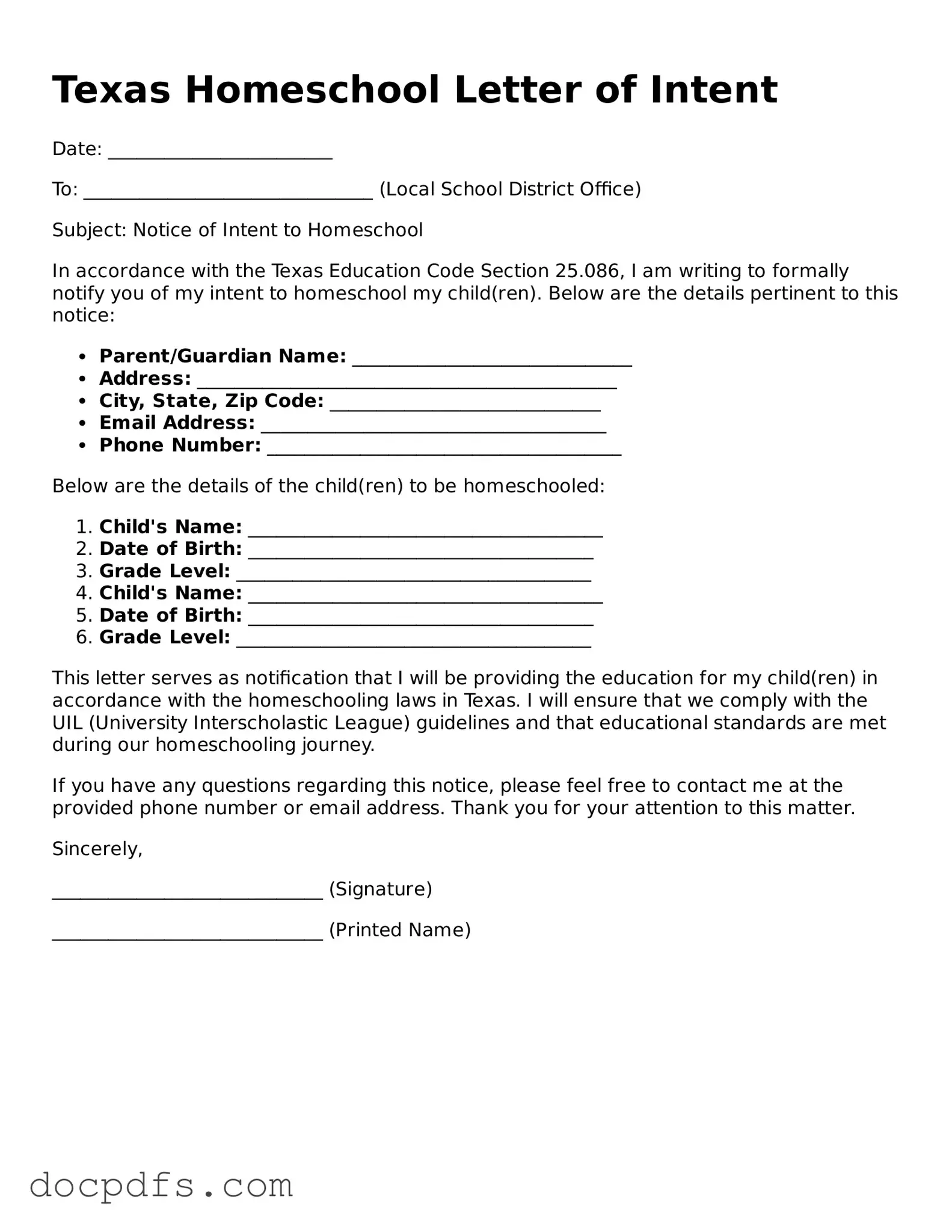What is the Texas Homeschool Letter of Intent?
The Texas Homeschool Letter of Intent is a document that parents or guardians submit to formally notify the state of Texas that they intend to homeschool their children. This letter serves as an official declaration and is a necessary step in establishing a homeschool program in Texas.
Who needs to submit the Letter of Intent?
Any parent or guardian who wishes to homeschool a child in Texas must submit the Letter of Intent. This includes families who are starting homeschooling for the first time or those who are transitioning from public or private school to a homeschool setting.
When should I submit the Letter of Intent?
The Letter of Intent should be submitted as soon as you decide to homeschool your child. It is recommended to send it at least 30 days before you plan to begin your homeschooling program. This allows for any necessary adjustments and ensures compliance with state requirements.
Where do I send the Letter of Intent?
The Letter of Intent should be sent to the school district in which your child resides. You can find the contact information for your local school district on the Texas Education Agency’s website. Some districts may allow you to submit the letter electronically, while others may require a physical copy.
Your Letter of Intent should include the following information:
-
Your name and address
-
Your child's name and date of birth
-
The date you plan to start homeschooling
-
A statement declaring your intent to homeschool
Make sure to keep a copy of the letter for your records.
There is no official format mandated by the state for the Letter of Intent. However, it should be clear, concise, and include all necessary information. A simple, straightforward letter that meets the requirements is sufficient.
What happens after I submit the Letter of Intent?
Once you submit the Letter of Intent, the school district will acknowledge its receipt. There is no formal approval process, so you can begin homeschooling your child as planned. However, it is important to maintain records of your homeschooling activities and curriculum, as you may be required to provide evidence of educational progress in the future.
Are there any consequences for not submitting the Letter of Intent?
Failing to submit the Letter of Intent may lead to complications. Your child may be considered truant if they are not enrolled in a public or private school and you have not notified the district of your homeschooling intent. To avoid potential legal issues, it is best to submit the letter as soon as you decide to homeschool.
